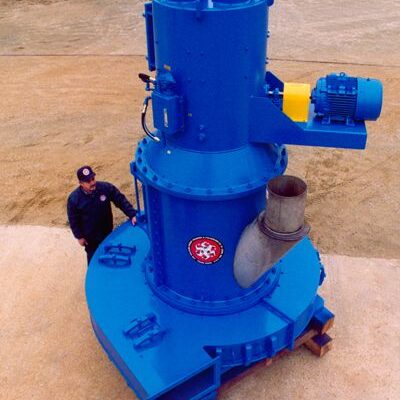There are many particle size reduction machine manufacturers in the world, but very few offer machines that provide quality products. As an independent industrial machine sales agent, I am often asked how to determine the right machine and the manufacturer for the material to be reduced.
.
Particle size reduction is simply a process to make big things smaller. An example would be to reduce a large rock into gravel size by crushing. This process is known as particle size reduction or “micronization” and milling of a particle to provide a more consistent product distribution.
Most manufacturers I represent will conduct a free test prior to purchase to determine the best machine for your needs. Materials can be sent, and a free test will be conducted prior to recommending a machine. To learn more about the process of testing, feel free to contact me directly.
Here are some of the machine processes available to consider:
Crushing
Crushing is generally considered to reduce particles, like large rocks, to gravel-sized material. This translates to roughly 0 to 5 mesh.
As you look for crushing equipment, having the answers to the following basic questions, will put you ahead on the road to obtaining a perfect machine.
- What raw material will be crushed and what particle size must the final product have?
- What’s the raw material’s moisture content range?
- What’s the raw material’s particle size range?
What production rate should the equipment achieve (in pounds, tons, kilograms per hour).
Grinding
Grinding is generally considered reduction to table salt size, or about 5 to 25 mesh.
Pulverizing
Pulverizing is generally considered to be reducing product to a fine powder. For instance, if you need coal, grain or other minerals to be in powder form, you would run them through a pulverizer or a roller mill. Pulverizing is typically defined as 25 mesh and beyond.
Shredding
Shredding is the action of cutting something into shreds.
Rule of thumb
A general rule to decide which material or particle reduction machine is necessary:
If material needs to be broken into smaller pieces with a hammer, you need a crusher.
If material needs to be reduced by grinding into fine salt-like or finer material, you need a grinder or pulverizer, but you would need a shredder to cut smaller pieces of materials.
As you look for crushing equipment, having the answers to the following basic questions, will help you obtain the a perfect machine to complete projects.
- What raw material will be crushed?
- What’s the raw material’s moisture content range?
- What’s the raw material’s particle size range?
- What production rate should the equipment achieve (in pounds per hour, tons per hour, or kilograms per hour)?
- What particle size range must the final product have?
What type of equipment is best for frequent material change over?
For processes that require frequent changeovers, machines with a wide range of process control and operating flexibility are the answer. Whether the materials are friable or not will affect the type of equipment that’s optimal. In addition to material type, the starting and final size of the milled material drives the mill selection process.
What are typical materials that people reduce in size
The type of materials that can be reduced are unlimited. Having been involved in several purchases of material or particle reducing machine for various African industries, there are absolutely no particle or material that a machine cannot reduce.
Here are some materials that can be reduced: rocks and stones, scrap metal, clay, coal, corn, diatomaceous earth, Gypsum, wood, limestone, glass, batteries, Barite, minerals, paper and much more.

